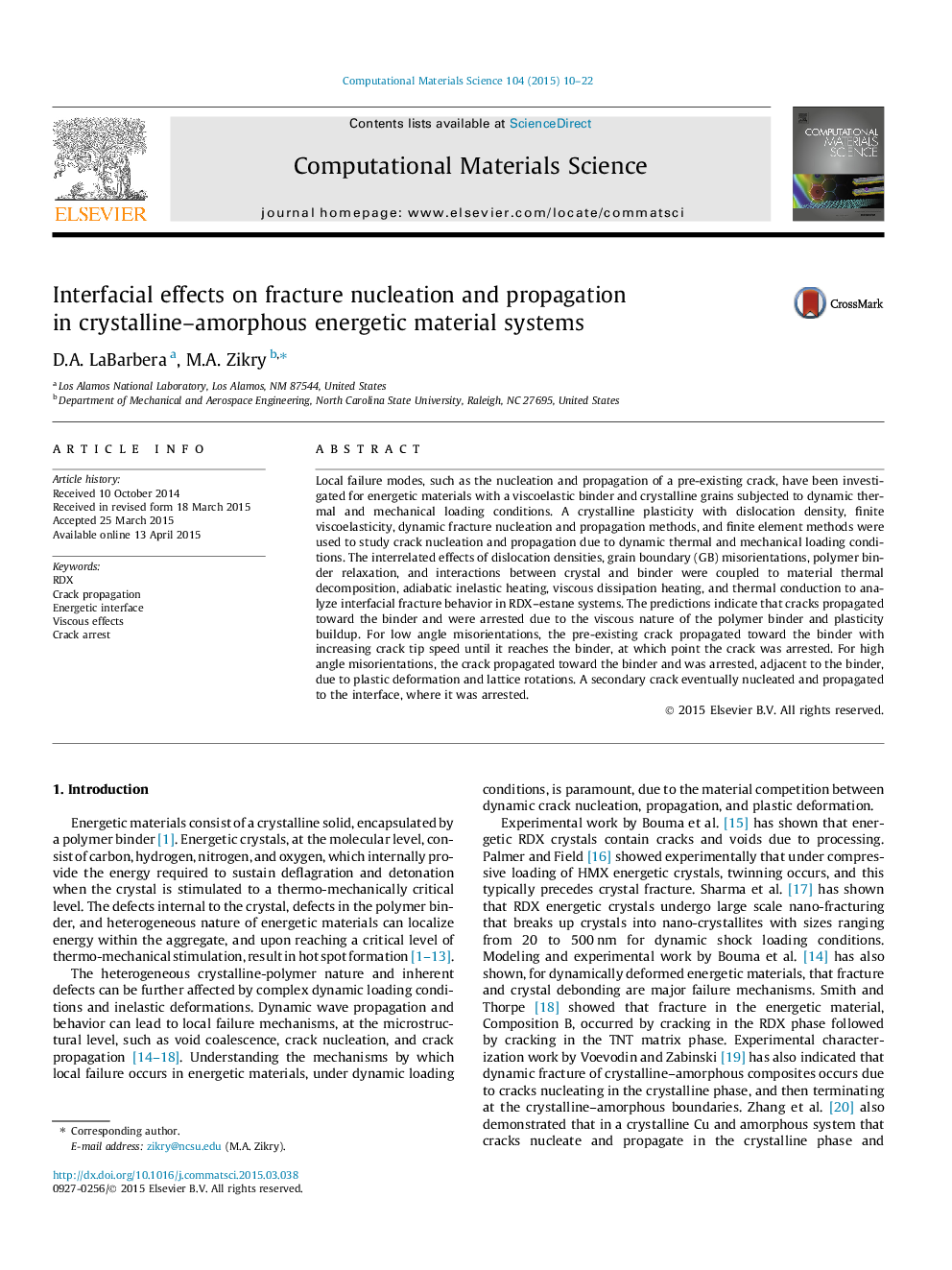| کد مقاله | کد نشریه | سال انتشار | مقاله انگلیسی | نسخه تمام متن |
|---|---|---|---|---|
| 1560224 | 1513906 | 2015 | 13 صفحه PDF | دانلود رایگان |
• Modeled bi-crystalline RDX and crack propagation toward an interface.
• Cracks were arrested at interface due to viscous nature of polymer binder.
• High angle GB misorientations affected the crack propagation pathway.
• High angle GB misorientations resulted in inelastic deformation ahead of interface.
Local failure modes, such as the nucleation and propagation of a pre-existing crack, have been investigated for energetic materials with a viscoelastic binder and crystalline grains subjected to dynamic thermal and mechanical loading conditions. A crystalline plasticity with dislocation density, finite viscoelasticity, dynamic fracture nucleation and propagation methods, and finite element methods were used to study crack nucleation and propagation due to dynamic thermal and mechanical loading conditions. The interrelated effects of dislocation densities, grain boundary (GB) misorientations, polymer binder relaxation, and interactions between crystal and binder were coupled to material thermal decomposition, adiabatic inelastic heating, viscous dissipation heating, and thermal conduction to analyze interfacial fracture behavior in RDX–estane systems. The predictions indicate that cracks propagated toward the binder and were arrested due to the viscous nature of the polymer binder and plasticity buildup. For low angle misorientations, the pre-existing crack propagated toward the binder with increasing crack tip speed until it reaches the binder, at which point the crack was arrested. For high angle misorientations, the crack propagated toward the binder and was arrested, adjacent to the binder, due to plastic deformation and lattice rotations. A secondary crack eventually nucleated and propagated to the interface, where it was arrested.
(a) Normal stress, (b) lateral stress, (c) shear stress, and (d) pressure for a nominal strain rate loading of 104 s−1, at a nominal strain of 6.5%, and random low angle GB misorientations. (Spatial dimensions are in units of meters.)Figure optionsDownload as PowerPoint slide
Journal: Computational Materials Science - Volume 104, 15 June 2015, Pages 10–22
